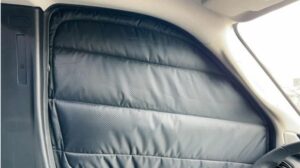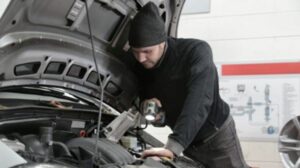Selecting the ideal roof box for the Tesla Model 3 can be both challenging and exciting. Given the sleek design and advanced technology of the Model 3, it’s essential to choose a roof box that complements both the aesthetics and performance of the car. This article delves into various factors to consider when picking the perfect roof box for your Model 3.
Design and aesthetics of the cargo box
The design and aesthetics play a critical role in selecting a roof box for the Tesla. Renowned for its contemporary and minimalist design, the Model 3 demands a roof box that fits in with this style. The roof box should not only be functional but also visually pleasing and in harmony with the overall design of the car.
Consider color matching for your roof box
Color matching is a key consideration. Many manufacturers offer customization options where you can select a roof box in the same color as your Tesla, providing a cohesive and seamless appearance. This is especially beneficial for those who place a high value on the aesthetics of their car and seek accessories that blend seamlessly with the car’s design.
Just like the roof box, roof racks can often be chosen or customized to match the car’s color. Many manufacturers now offer roof racks and boxes in a range of colors, allowing you to pick a shade that precisely matches or complements the color of your Tesla. This creates a sense of continuity and uniformity in the car’s design, which is particularly desirable for a car with the modern appearance of the Tesla Model 3.
Achieving a unified look with matching finish
When it comes to the finish, it’s important that the roof box and racks have a similar or complementary surface to the car’s exterior. For example, a high-gloss finish on the roof box can well suit a car with a similar glossy paint, while a matte finish might be more appropriate for cars with a more subdued or textured surface.
The overall picture
Consider the overall picture – how the roof box and racks visually integrate with the car. A well-matched combination of these components can enhance the aesthetic appeal of the Tesla and make adding a roof box a positive design feature rather than just a practical solution. To achieve this, exploring custom-designed options or consulting with car customization experts might be worthwhile.
The shape of the roof box should harmonize with the car’s design
In addition to color, the shape and lines of the roof box also play a crucial role. A roof box with smooth, streamlined contours that mirror the Model 3’s aerodynamic design can enhance the overall visual experience. This is not just a matter of appearance – an aerodynamically shaped roof box can also help reduce air resistance, which can positively impact the car’s energy efficiency and range.
Aerodynamics, an important part of a Tesla Model 3 roof box
The aerodynamics of a roof box is a crucial factor, especially for vehicles like the Tesla Model 3, designed with a strong focus on aerodynamic efficiency. The design of the Tesla aims to minimize air resistance, directly impacting energy efficiency and range. Therefore, when adding a roof box, it’s crucial that it doesn’t undermine these carefully calibrated aerodynamic properties.
An aerodynamic roof box reduces air resistance
An aerodynamically designed roof box helps reduce air resistance by following the car’s natural flow lines. This means the roof box has a streamlined shape, often with a forward-leaning design that helps direct airflow over and around the box efficiently. Such a design reduces turbulence and air resistance that could otherwise arise when air meets a flat, unshaped surface.
Choose a roof box tested for low air resistance
To maintain the performance and efficiency of the Model 3, choosing a roof box tested and proven to have low air resistance is important. Many roof box manufacturers conduct extensive testing, including wind tunnel trials, to ensure their products minimally impact the vehicle’s aerodynamics. Some models are specifically designed to complement aerodynamic vehicles like the Tesla Model 3 and may even enhance the overall airflow profile of the car.
Positioning on the roof has some impact – follow manufacturer’s instructions:
Besides the shape of the roof box, its position on the car’s roof is also important. Proper mounting and placement can further reduce air resistance and thus maintain the car’s energy efficiency. This means carefully following the manufacturer’s instructions for mounting and adjusting the roof box’s placement for optimal aerodynamics.
Considerations before mounting on the roof
When mounting a roof box on the Tesla, it’s essential not to focus solely on aesthetics and aerodynamics but also on the roof’s load capacity.
Weight considerations in mounting
To ensure you don’t overload the car’s roof, carefully consider the weight of the roof racks you choose and the roof box itself. Roof racks should be lightweight yet robust enough to securely support the roof box. Add the weight of the roof box and then the contents you plan to pack in it, ensuring the total weight stays within the specified roof load limit.
The Tesla Model 3 has a maximum roof load capacity of approximately 70 kg (about 154 lb). This means the combined weight of the roof racks, the roof box, and its contents should not exceed this limit.
Weight and driving pleasure in a Tesla
The Model 3 is built for a balanced and enjoyable driving experience. Therefore, choose a lightweight roof box that doesn’t compromise the car’s performance and handling characteristics. A heavy or bulky roof box can negatively affect the car’s handling and aerodynamics. A popular box developed for maximum aerodynamics, known for its association with the Tesla Model 3, is the Calix Roofboxes H20 model. After a private experiment from a car enthusiast, this was taken into consideration by the manufacturer Autoform in Malung. Following tests, an aerodynamic box was developed to be placed “backwards” on the car, offering good aerodynamic advantages.
Keep your roof box safe with theft protection
When it comes to the safety and theft protection of roof boxes, there are several aspects to consider ensuring your load is secure both on the road and when parked. The safety of a roof box involves not just its contents but also how it affects the overall safety of the car during transit.
Firstly, a roof box should have robust locking mechanisms. A strong lock is crucial for protecting your belongings from theft. Modern roof boxes are often equipped with advanced lock systems in the form of multi-point locks that are difficult to manipulate, providing extra security. Additionally, the locking mechanisms should be sturdy enough to withstand forces that can occur during driving, such as strong wind or rapid movements.
Alternative storage solutions
Choosing the right storage solution for your vehicle can be crucial for maximizing space and safety. In addition to traditional roof boxes, there are various alternative storage options that can suit different needs and preferences. Here is a list of some of these options:
- Rear-mounted cargo boxes and carriers
These are mounted on the car’s trunk or rear bumper, offering easy cargo access. They are particularly suited for bulky items hard to lift onto the roof. - Trailers
Suitable for substantial cargo needs, trailers come in various styles, from simple open designs to secure, lockable ones. They are handy for transporting very heavy or large items. - Foldable seats for extra luggage space
Many vehicles have rear seats that fold down, creating additional cargo space inside the car—a straightforward solution for transporting larger items. - Roof baskets
These offer a more open storage solution than roof boxes, providing flexibility for stacking and securing diverse cargo types, especially useful for oversized or irregular items. - Ski and snowboard carriers
Designed for winter sports enthusiasts, these carriers mount onto roof racks and are easily accessible, ensuring safe transport of skis and snowboards. - Bike carriers
Available in designs for attachment to the roof, trunk, or tow hitch, allowing secure bike transportation without occupying interior vehicle space. - Roof racks without a roof box
Sometimes, it’s enough to secure luggage directly onto roof racks, particularly crucial for safe transport and avoiding hazards to other road users. For water sports gear like kayaks, canoes, and surfboards, there are specially designed racks to safely carry equipment.
Each option has its own advantages and limitations, and the choice depends on the specific needs and the type of cargo to be transported. It is important to consider factors such as accessibility, safety, vehicle compatibility, and the type of cargo you plan to transport when choosing the best storage solution for your vehicle.
Price and different brands
There is a wide range of roof boxes available from various manufacturers. Prices vary depending on the brand, size, and quality. Some of the leading manufacturers include Calix, Thule, and Packline, with prices often ranging from a few thousand to over ten to fifteen thousand kronor. When it comes to roof racks, Yakima and Rhino-Rack are popular options. Read more






